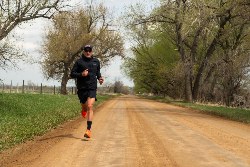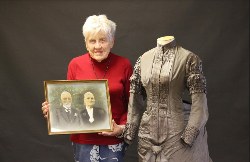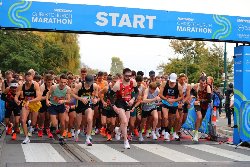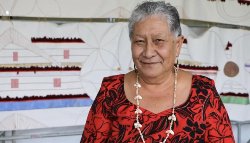Research: People who use wheelchairs included in rebuild?
Canterbury research to see if people who use wheelchairs feel included in the rebuild
September 5, 2014
A University of Canterbury PhD student is looking into whether people who use wheelchairs have felt included in the Canterbury rebuild and recovery in the three years since the 2010 and 2011 earthquakes.
Postgraduate student Johnny Bourke, who is being supervised by a team of researchers led by the head of the School of Health Sciences Professor Philip Schluter, is surveying people who use wheelchairs in Canterbury, to find out their experience of inclusion and participation in the long-term recovery of the region.
``In the first phase of the study, we will interview 12 people who use wheelchairs regarding their experience of community inclusion. The themes will inform the second phase of the study, a survey administered to a much larger sample of people who use wheelchairs. We want to make sure that what we are surveying are the things that matter to people who use wheelchairs.
``The Christchurch rebuild offers a unique opportunity to improve pre-earthquake conditions for people who use wheelchairs rarely available to established cities. The 2013 New Zealand disability survey estimated that 1.1 million people reported a disability, representing 24 percent of the total population, an increase from 17 percent reported in 2006.
``While we don’t know how many people in New Zealand use wheelchairs, 14 percent of the national population (632,000 people) identified as having a physical impairment that required a mobility aid in last year’s disability survey.
``Disaster research suggests that disabled people are disproportionally vulnerable during the initial period following a natural disaster due to physical impact of the disaster itself and also society’s often inadequate response to the needs of disabled people.
``Damaged infrastructure can restrict mobility, and shelters and temporary housing options are often inaccessible. There is often little collaboration with disabled people in designing emergency planning, which means emergency organisations struggle to understand the specific needs of disabled people.
``These trends appeared to be present following the Canterbury earthquakes in research by Suzanne Phibbs and colleagues from Massey University who explored the experience of disabled people in Canterbury in the initial period following the September 2010 earthquakes.
``Despite this growing body of literature, there is scant research at international and national levels that has explored the long-term experience of disabled people in the years following a natural disaster.’’
The Canterbury recovery provides an exciting opportunity to address this gap in the literature, Bourke says. Government policy such as the 2002 New Zealand disability strategy advocates for equal opportunities for disabled people to be included and participate in society.
``However, we currently don’t know whether disabled people feel included in the long-term community recovery following the Canterbury earthquakes. My research should help answer this.’’
Bourke’s study is being funded in part through the Burwood Academy of Independent Living, the Canterbury Community Trust, Rotary and the Ministry of Social Development. He was a finalist in the university’s annual three-minute thesis presentation event last month.


 Braden Currie: Sets Sights On The Ironman North American Championships In Texas
Braden Currie: Sets Sights On The Ironman North American Championships In Texas Whanganui Regional Museum: Historic Wedding Dress Unveiled, A Piece Of Marton’s Heritage
Whanganui Regional Museum: Historic Wedding Dress Unveiled, A Piece Of Marton’s Heritage Donovan Ryan: Local Runner Takes Out Frontrunner Christchurch Marathon
Donovan Ryan: Local Runner Takes Out Frontrunner Christchurch Marathon University of Auckland: Tributes Flow For Much Loved Pacific Leader Melegalenu’u Ah Sam
University of Auckland: Tributes Flow For Much Loved Pacific Leader Melegalenu’u Ah Sam NZEI: Ministry Of Education Cuts Will Disproportionately Affect Pasifika
NZEI: Ministry Of Education Cuts Will Disproportionately Affect Pasifika Day One Hapai te Haeata: Call To Action For Young Filmmakers Against The Backdrop Of Funding Cuts
Day One Hapai te Haeata: Call To Action For Young Filmmakers Against The Backdrop Of Funding Cuts